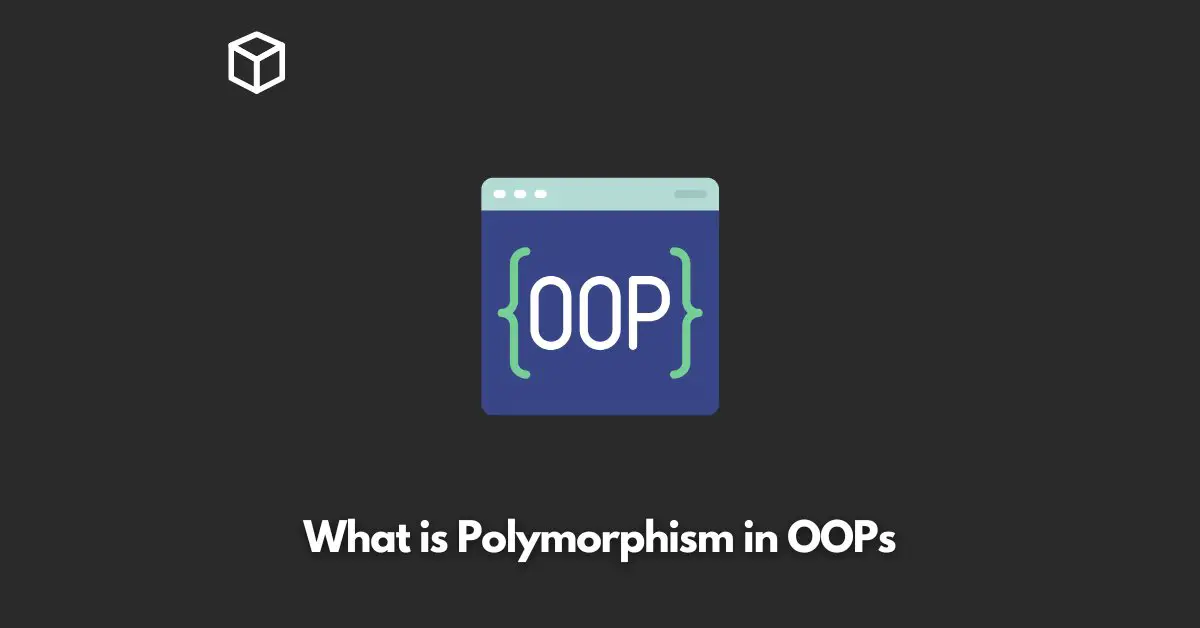Polymorphism is a fundamental concept in object-oriented programming (OOP) that allows objects of different classes to be treated as objects of the same class.
This enables developers to write generic code that can work with objects of various types, rather than writing separate code for each individual type.
In this article, we’ll dive deeper into what polymorphism is, how it works, and how it can be leveraged to write efficient and maintainable code.
What is Polymorphism in OOP?
Polymorphism is derived from two Greek words: “poly” meaning many and “morph” meaning form.
In OOP, polymorphism refers to the ability of an object to take on multiple forms.
This is achieved by having objects of different classes implement the same method or interface.
By doing so, objects of these classes can be treated as objects of a common type, regardless of their specific type.
For instance, consider a class “Shape” with a method “calculateArea()”.
If different subclasses of “Shape” like “Rectangle”, “Triangle”, and “Circle” have their own implementation of the “calculateArea()” method, we can create a list of “Shape” objects and call the “calculateArea()” method on each of these objects, regardless of their specific type.
Types of Polymorphism
There are two types of polymorphism in OOP:
- Dynamic Polymorphism
- Static Polymorphism
Dynamic Polymorphism
Dynamic polymorphism, also known as method overriding, is when an object of a subclass overrides the method of its parent class.
This allows an object to exhibit different behavior based on its type at runtime.
For example, consider a class “Animal” with a method “makeSound()”.
The subclasses “Dog” and “Cat” can override the “makeSound()” method to provide their own implementation, like so:
class Animal {
public void makeSound() {
System.out.println("Animal sound");
}
}
class Dog extends Animal {
@Override
public void makeSound() {
System.out.println("Bark");
}
}
class Cat extends Animal {
@Override
public void makeSound() {
System.out.println("Meow");
}
}
Static Polymorphism
Static polymorphism, also known as method overloading, is when multiple methods in a class have the same name but different parameters.
This allows a single method to exhibit multiple behaviors based on the arguments passed to it.
For example, consider a class “Calculator” with a method “add()”. The “add()” method can be overloaded to provide multiple implementations for different types of arguments, like so:
class Calculator {
public int add(int a, int b) {
return a + b;
}
public double add(double a, double b) {
return a + b;
}
}
Benefits of Polymorphism
- Code Reusability: Polymorphism enables developers to write generic code that can work with objects of various types, reducing the amount of duplicated code and making it easier to maintain.
- Increased Readability: By using polymorphism, code becomes more readable and easier to understand, as it eliminates the need for multiple conditionals and type checks. This also reduces the likelihood of bugs and makes it easier to identify and fix issues.
- Improved Flexibility: Polymorphism allows for greater flexibility in code, as it enables developers to write code that can adapt to changing requirements and new types of objects without the need for major changes.
- Abstraction: Polymorphism helps to provide abstraction, as it allows developers to think in terms of the common interface or behavior shared by objects, rather than their specific types.
Conclusion
In conclusion, polymorphism is a powerful concept in OOP that enables developers to write generic, flexible, and maintainable code.
By allowing objects of different classes to be treated as objects of the same class, polymorphism provides many benefits, including code reusability, increased readability, improved flexibility, and abstraction.
Whether you’re a beginner or an experienced programmer, understanding polymorphism is essential for creating efficient and effective code in object-oriented programming.




